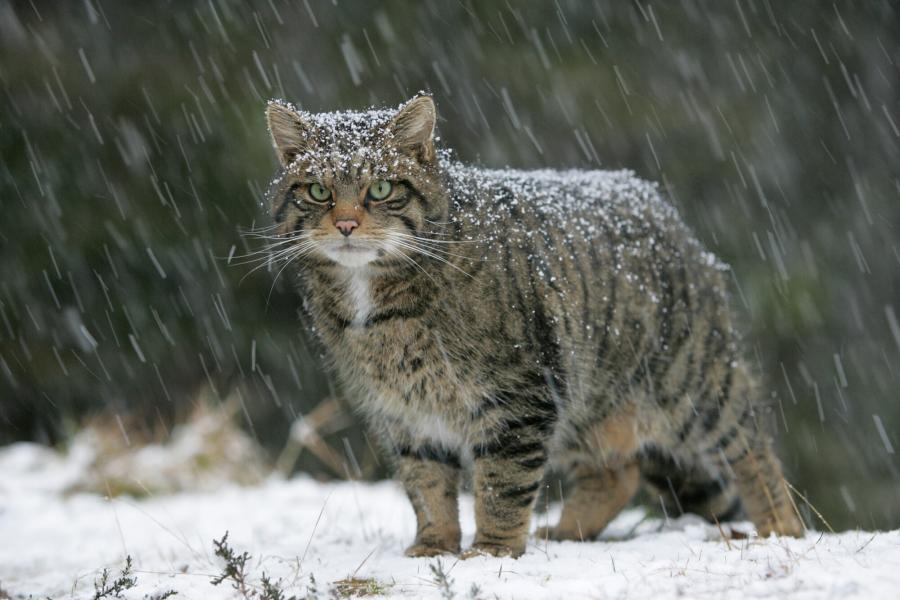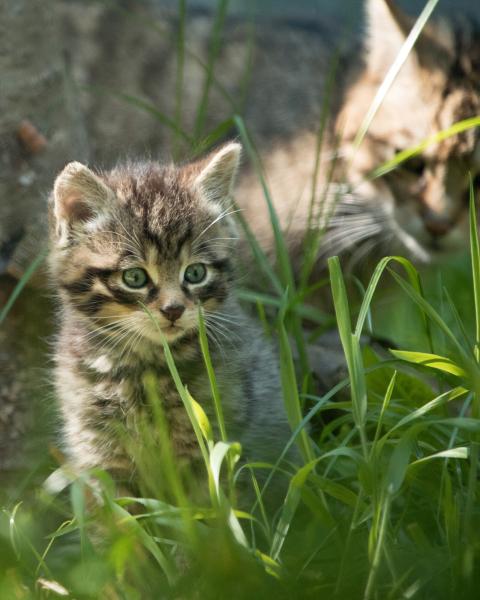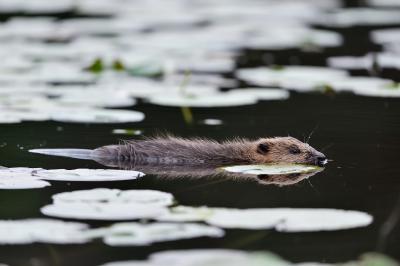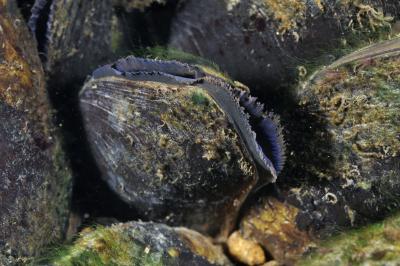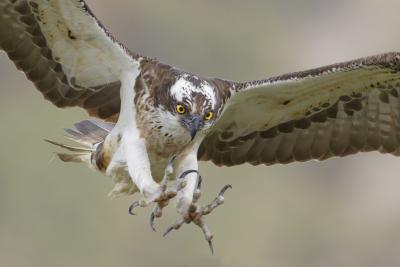Scottish wildcat
Felis silvestris
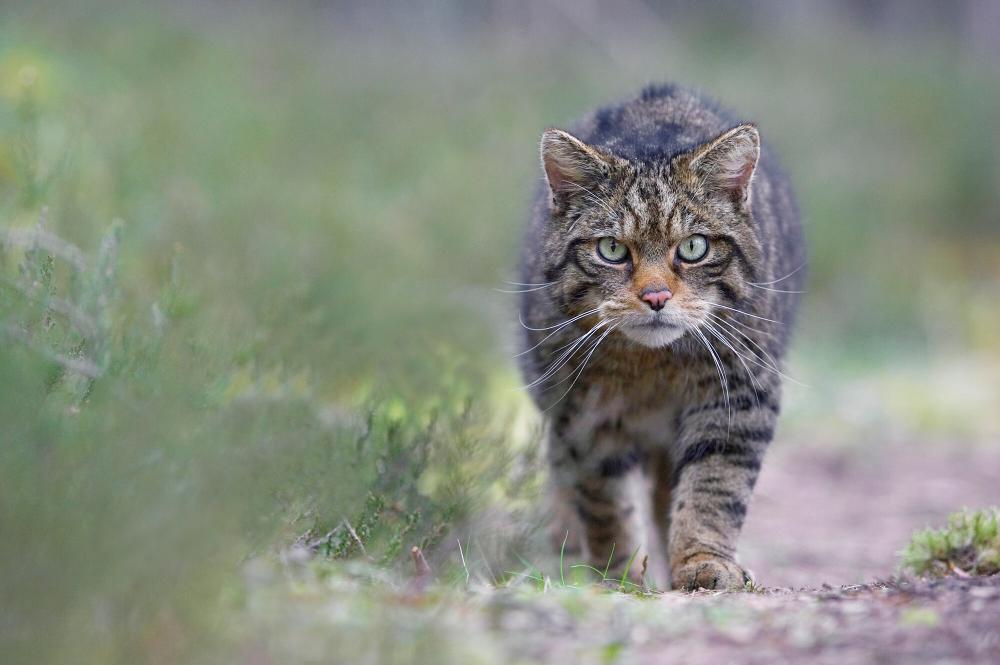
When the Eurasian lynx became extinct in medieval times, it made the wildcat Britain’s last remaining native feline. Wildcats became officially protected by law in 1988 and are now a European Protected Species.
Factsheet
Weight: Three to seven kg
Lifespan: Adult wildcats in the wild live for around seven years
Best time to spot: Year-round
Population in park: A very new population is putting down roots in Badenoch and Strathspey
As a rare and shy animal that prefers to be active around dawn and dusk or on moonlit nights, you’d be very lucky to catch a glimpse of a wildcat in the wild. If you did, being sure it was a wildcat would be another challenge, as they look similar to tabby domestic cats. Experts are able to tell the difference thanks to the wildcat’s distinct tail banding, body markings, broader head and thick, blunt tail.
Once found throughout mainland Britain, an initial significant decline in the wildcat population was largely due to persecution and overhunting. They have been further threatened, almost to extinction, by interbreeding with domestic cats. In fact, until recently, nobody was sure if any pure wildcats remained at all.
But in 2023, as part of the Saving Wildcats project, 19 individuals bred from the purest native stock available were released into the wild in the Cairngorms National Park, followed by a further nine in 2024. Camera and GPS tracking revealed the birth of kittens from some of the released cats in the summer of 2024.
Did you know?
When the Eurasian lynx became extinct in medieval times, it made the wildcat Britain’s last remaining native feline. Wildcats became officially protected by law in 1988 and are now a European Protected Species.
Factsheet
Weight: Three to seven kg
Lifespan: Adult wildcats in the wild live for around seven years
Best time to spot: Year-round
Population in park: A very new population is putting down roots in Badenoch and Strathspey
As a rare and shy animal that prefers to be active around dawn and dusk or on moonlit nights, you’d be very lucky to catch a glimpse of a wildcat in the wild. If you did, being sure it was a wildcat would be another challenge, as they look similar to tabby domestic cats. Experts are able to tell the difference thanks to the wildcat’s distinct tail banding, body markings, broader head and thick, blunt tail.
Once found throughout mainland Britain, an initial significant decline in the wildcat population was largely due to persecution and overhunting. They have been further threatened, almost to extinction, by interbreeding with domestic cats. In fact, until recently, nobody was sure if any pure wildcats remained at all.
But in 2023, as part of the Saving Wildcats project, 19 individuals bred from the purest native stock available were released into the wild in the Cairngorms National Park, followed by a further nine in 2024. Camera and GPS tracking revealed the birth of kittens from some of the released cats in the summer of 2024.
Did you know?
Also known as the highland tiger, wildcats are a solitary and territorial species. Territory size varies according to gender and the availability of prey. A female territory in a productive environment may be as small as one or two square kilometres. A male territory in a landscape with low prey resources can reach over 20 square kilometres.
Male territories rarely overlap, and female territories tend not to overlap much either. However, male territories, which are typically larger, often overlap with several of those belonging to females.
Males and females only interact for a few days during the mating season. The cats mark out their territories and announce their presence using scent markings such as spraying, faeces, clawing and face-rubbing on tree trunks and fenceposts.
When choosing a home, wildcats prefer to patrol the edges of woodland, farmland and moorland where there is sufficient cover. They don’t usually live higher than 650 metres above sea level and will avoid heavy snow.
When it’s time to eat, wildcats seek out hares, rabbits and small rodents such as voles, mice and rats, birds and even fish and frogs. They are stealth hunters, relying on patience and their excellent sight, hearing and sense of smell to stalk and pounce on prey. Their highly sensitive whiskers help during the hunt too.
Need to know
Scottish wildcats, and the places that they use, are protected under Scots and European law.
It is an offence to deliberately or recklessly:
- capture, injure, kill or harass a wildcat
- disturb a wildcat in a den or any other structure or place it uses for shelter or protection
- disturb a wildcat while it is rearing or otherwise caring for its young
- obstruct access to a den or other structure or place wildcats use for shelter or protection or otherwise deny the animal use of that place
- disturb a wildcat in a manner or in circumstances likely to significantly affect the local distribution or abundance of the species
- disturb a wildcat in a manner or in circumstances likely to impair its ability to survive, breed or reproduce, or rear or otherwise care for its young
It is also an offence to:
- damage or destroy a breeding site or resting place of such an animal (whether or not deliberately or recklessly)
- keep, transport, sell or exchange, or offer for sale or exchange any wildcat (or any part or derivative of one) obtained after 10 June 1994





